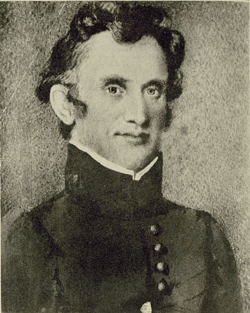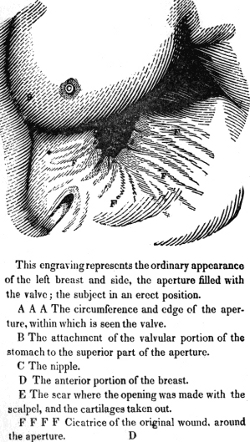 If Dr. William Beaumont were still alive today (November 21), it would be his 229th birthday.
If Dr. William Beaumont were still alive today (November 21), it would be his 229th birthday.
Dr. Beaumont is very, very dead.
But he’s worthy of notice because, less than two hours south of Sault Ste. Marie in 1825, he started a series of gruesome medical experiments responsible for a great deal of what we know today about human digestion.
The U.S. army surgeon was the only physician on Mackinac Island when a 19-year-old French Canadian trapper named Alexis St. Martin was hit by an accidental shotgun blast from just two or three feet away.
The shot blew out part of Martin’s abdominal wall and left him with a perforated stomach wall.
Here is the good doctor’s own description of St. Martin’s case:
“I was called to him immediately after the accident. Found a portion of the lungs as large as a turkey's egg protruding through the external wound, lacerated and burnt, and below this another protrusion resembling a portion of the stomach, what at first view I could not believe possible to be that organ in that situation with the subject surviving, but on closer examination I found it to be actually the stomach, with a puncture in the protruding portion large enough to receive my forefinger, and through which a portion of his food that he had taken for breakfast had come out and lodged among his apparel. In this dilemma I considered my attempt to save his life entirely useless.”
The hardy Canadian trapper nonetheless recovered, but with a large fistula (passage) into his stomach (see illustration below.)

The fistula was held closed by surrounding tissue, but all Dr. Beaumont had to do was press on it with his finger and he could directly observe what was happening in St. Martin’s stomach.
Most of what Dr. Beaumont knew about medicine was gained from observing patients, not from books.
In the spring of 1825, it occurred to this observant self-educated practitioner that the hole in St. Martin’s stomach provided an unprecedented opportunity to study human digestion.
“This case affords an excellent opportunity for experimenting upon the gastric fluids and process of digestion,” Beaumont wrote in his journal. “It would give no pain, nor cause the least uneasiness, to extract a gill of fluid every two or three days, for it frequently flows out spontaneously in considerable quantities. Various kinds of digestible substances might be introduced into the stomach and then easily examined during the process of digestion. I may, therefore, be able hereafter to give some interesting experiments on these subjects.”
And so there at Fort Mackinac, Beaumont began a series of 238 experiments that he eventually published in a book titled Experiments and Observations on the Gastric Juice and the Physiology of Digestion.
Beaumont tied silk string to mesh bags containing samples of food including cabbage, stale bread, raw salted lean beef, raw salted fat pork, raw lean fresh beef, boiled corned beef, even "high seasoned a la mode beef,” and inserted them into St. Martin’s stomach.
Then he fished the samples out repeatedly, observing how long it took the food to break down.
Bread and cabbage were digested in just one hour.
Beef took 10 hours.
At one point, Beaumont even tasted chicken from St. Martin’s stomach,
Beaumont’s research is now considered among the most important landmarks of medical history.
Following his example, other researchers used fistulas to study the gall bladder and intestines.
Today, he’s considered the father of gastric physiology and a pioneer of gastric pathology and dietetics.